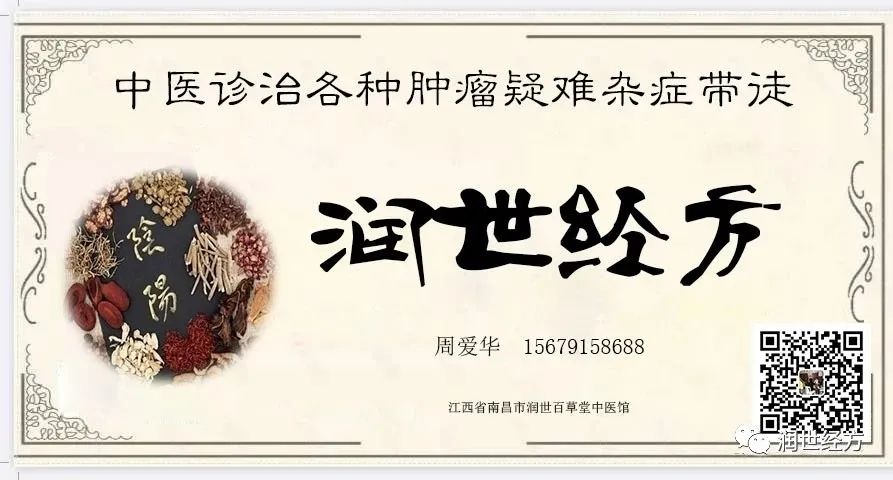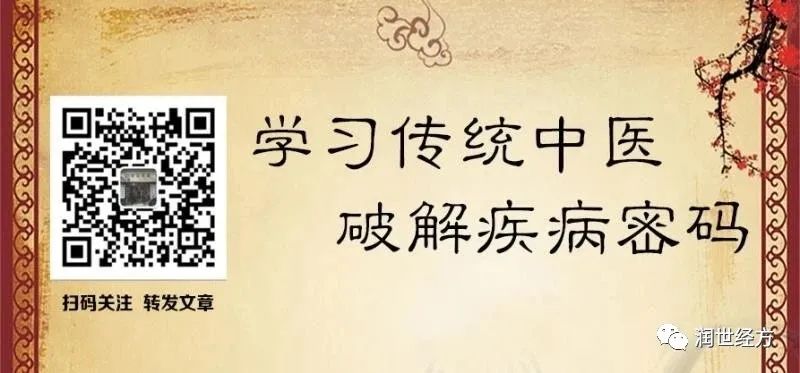
Introduction: Xiangling Pill, derived from the “Jisheng Fang” (Prescriptions for Benefiting Life), is primarily used to treat the accumulation of Qi and blood stasis. In modern clinical practice, it is commonly used for treating uterine fibroids, breast hyperplasia, breast fibromas, endometriosis, dysmenorrhea, and excessive menstrual bleeding associated with Qi stagnation and blood stasis.
Formula Song: In Xiangling Pill, use Qingpi (Green Peel), Dingmu (Clove), Sanling (Bupleurum), and E Zhu (Curcuma) as the main ingredients, then add Zhike (Bitter Orange) and Chuanlianzi (Melia Toosendan) to promote Qi and relieve stagnation.
Composition: Mu Xiang (Aucklandia) (unburned), Ding Xiang (Clove), Jing Sanling (Bupleurum) (finely ground, soaked in wine overnight), Zhi Ke (Bitter Orange) (stir-fried), E Zhu (Curcuma) (finely ground), Qing Pi (Green Peel) (white removed), Chuan Lian Zi (Melia Toosendan) (ground, stir-fried), and Huo Xiang (Agastache) (stir-fried) in equal parts.
Dosage: Grind the above herbs into a fine powder, mix with vinegar to form a paste, and roll into pills coated with finely ground vermilion. Each dose is 10 grams, taken with a decoction of fresh ginger and salt.
Effects: Regulates Qi, relieves stagnation, invigorates blood, and reduces accumulation.
Indications: Treats five accumulations, breaks phlegm masses, and resolves symptoms of cold and heat accumulation. Symptoms include abdominal masses that may appear and disappear, soft or hard with pain, or visible on the face, neck, chest, or arms with blood spots. Patients may experience reduced appetite, weight loss, and in women, irregular menstruation or excessive menstrual bleeding, constipation, pale and dark tongue, and a wiry slippery pulse.

Formula Explanation:
Accumulation is a term in Traditional Chinese Medicine (TCM) referring to abdominal masses that may be painful or distended. Accumulation is tangible, with fixed masses that do not move, and pain is localized, indicating a disease in the blood. In contrast, gathering is intangible, with masses that may appear and disappear, and pain is variable, indicating a disease in the Qi. Due to the close relationship between accumulation and gathering, they are often discussed together.
The “Neijing” (Inner Canon) first introduced the term accumulation and discussed its formation and treatment principles.
The “Nanjing” (Classic of Difficulties) clarified the differences between accumulation and gathering in pathology and clinical manifestations, stating: “Accumulation arises from the five organs, while gathering is formed in the six bowels.”
The “Jinkui Yaolue” (Essentials of the Golden Chamber) further explained: “Accumulation is a disease of the viscera, which does not move; gathering is a disease of the bowels, which occurs intermittently.”
According to the “Nanjing”: “Accumulation arises from the Yin Qi of the five organs, while gathering is formed from the Yang Qi of the six bowels. Accumulation has a fixed location, while gathering does not. Therefore, the differentiation between accumulation and gathering is based on these characteristics.”
The primary locations of accumulation and gathering are in the liver and spleen. The basic pathogenesis involves Qi stagnation and blood stasis. Gathering is primarily characterized by Qi stagnation, while accumulation is primarily characterized by blood stasis. In the early stages of the disease, Qi stagnation and blood stasis are present, with pathogenic Qi obstructing the normal flow, indicating a solid pathological nature. Over time, as the condition deepens, the righteous Qi may be depleted, leading to a mixed pattern of deficiency and excess. In the later stages, with Qi and blood deficiency and a weakened constitution, the condition is primarily one of deficiency. The terms deficiency and excess are relative, as the formation of accumulation and gathering is always related to the strength of the righteous Qi.
The differentiation of accumulation and gathering must be based on the duration of the illness, the strength of the pathogenic and righteous Qi, and accompanying symptoms to determine the primary and secondary aspects of deficiency and excess. Gathering is often a solid condition. In the early stages of accumulation, the righteous Qi is not yet deficient, and the pathogenic factor is dominant; in the middle stage, the masses become harder, the righteous Qi is gradually injured, and both pathogenic and righteous Qi are involved; in the late stage, if the stasis does not resolve, the condition will be primarily one of deficiency.
Accumulation arises from the Yin Qi of the five organs, while gathering is formed from the Yang Qi of the six bowels. Disharmony between Yin and Yang, weakness of the viscera and bowels, and invasion by external pathogens lead to accumulation and gathering; emotional disturbances injure the five organs, resulting in the formation of five accumulations. Qi stagnation is the initiating factor and the central link in the pathological evolution, thus treatment focuses on promoting Qi and relieving stagnation, regulating Qi movement, assisting transformation, invigorating blood, and resolving accumulations.
In the formula, Mu Xiang and Zhi Ke are both used to promote Qi and relieve stagnation, Qing Pi breaks Qi and soothes the liver, Chuan Lian Zi clears heat in the lower jiao and has the effect of promoting Qi and alleviating pain, while San Ling breaks the Qi stagnation in the blood, and E Zhu eliminates blood stasis in the blood compartment to assist in promoting Qi and relieving stagnation. Xiao Huo Xiang warms the meridians, opens the channels, regulates Qi, and alleviates pain. The combination of these herbs works together to promote Qi, relieve stagnation, break stasis, and resolve accumulations.
Xiangling Pill treats five accumulations and six gatherings, clinically indicated by abdominal masses that may appear and disappear, soft or hard with pain, or visible on the face, neck, chest, or arms with blood spots, red tongue, pale and dark quality, and a wiry slippery pulse as key diagnostic points.
Modification of the Formula:
For Qi deficiency, add Huang Qi (Astragalus), Dang Shen (Codonopsis), and Xianhecao (Herba Agrimoniae); for severe blood stasis, add Tao Ren (Peach Kernel), Dan Pi (Moutan Cortex), Shui Zhi (Leech), and Meng Chong (Horsefly); for kidney Yang deficiency, add Rou Gui (Cinnamon) and Fu Zi (Aconite); for blood deficiency, combine with Si Wu Tang (Four Substance Decoction); for heavy phlegm-dampness, combine with Er Chen Tang (Two Aged Decoction); for spleen deficiency with excessive dampness, add Cardamom, Grass Fruit, Sand Ginger, Huo Xiang, Cang Zhu, and Fu Ling to strengthen the spleen and resolve dampness.
Contraindications: Not to be used by pregnant women or those without blood stasis.
Differentiation from Similar Formulas:
Xiangling Pill and Wujisan both have the functions of promoting Qi, resolving accumulations, and alleviating pain. The latter is more focused on dispelling cold, eliminating dampness, and transforming phlegm, while the blood-breaking and Qi-promoting effects are somewhat insufficient; the former has a stronger effect on breaking blood and promoting Qi. Therefore, it is suitable for cases of Qi stagnation and blood stasis with five accumulations and six gatherings.
Same Name Formulas:
“Revised Yan’s Jisheng Fang”: Xiangling Pill
Also known as Xianfang Xiangling Wan (“Hygiene Treasure” Volume 14), Xiang Ke Wan (“Jade Machine Micro Meaning” Volume 20).
Prescription: Mu Xiang 15g, Ding Xiang 15g, Jing Sanling (finely ground, soaked overnight), Zhi Ke (peeled, stir-fried), Qing Pi (white removed) 30g, Chuan Lian Zi (ground, stir-fried) 30g, Huo Xiang (stir-fried) 30g, and Peng Zhu (finely ground) 30g (with 30 pieces of shelled Ba Dou stir-fried, Ba Dou yellow, remove Ba Dou).
Preparation: Grind into fine powder, mix with vinegar to form pills, the size of a wutong seed, coated with finely ground vermilion.
Functions and Indications: Treats accumulation, masses, and phlegm rashes.
Dosage: Take 20 pills, with a decoction of fresh ginger and salt, or warm wine, at any time.
Note: The original formula did not specify the amounts of Jing Sanling, Zhi Ke, Qing Pi, Chuan Lian Zi, and Huo Xiang, which have been supplemented according to “Hygiene Treasure” Volume 14.
Excerpted from “Revised Yan’s Jisheng Fang”
“Danxi’s Heart Method” Volume 3: Xiangling Pill
Prescription: Sanling 180g (stir-fried with vinegar), Qing Pi, Chen Pi, E Zhu (prepared or stir-fried with vinegar), Zhi Ke (stir-fried), Zhi Shi (stir-fried), Luobo Zi (stir-fried), Xiang Fu Zi each 90g (stir-fried), Huang Lian, Shen Qu (stir-fried), Mai Ya (stir-fried), Bie Jia (vinegar roasted), Gan Qi (stir-fried until smoke dissipated), Tao Ren (stir-fried), Nao Sha, Sha Ren, Gui Shao, Mu Xiang, Gan Cao (roasted) each 30g, Bing Lang 180g, Shan Zha 120g.
Preparation: Grind into powder, mix with vinegar to form pills.
Functions and Indications: Treats five accumulations and six gatherings of Qi masses.
Dosage: Take 30-50 pills, with plain water.
Excerpted from “Danxi’s Heart Method” Volume 3
“Concise Medical Compendium” Xiangling Pill
Composition: Sanling 4 liang (stir-fried with vinegar), Qing Pi 2 liang, Chen Pi 2 liang, Peng Zhu (prepared) 2 liang, Zhi Shi 2 liang, Luobo Zi 2 liang, Xiang Fu Zi 2 liang, Hou Po 2 liang, Huang Lian 1 liang, Rou Gui 1 liang, Shen Qu 1 liang, Mai Ya 1 liang, Shan Zha 1 liang, Bing Lang 1 liang, Yi Zhi 1 liang, Gan Qi (stir-fried until smoke dissipated) 5 fen, Mu Xiang 5 fen, Sha Ren 5 fen, Tao Ren 5 fen.
Source of Prescription: “Concise Medical Compendium” Volume 3.
Indications: Five accumulations and six gatherings, obstruction of the two jiao, and various accumulations.
Preparation Method: Grind into powder, mix with vinegar to form pills, the size of a wutong seed.
Dosage: Take 70 pills, with empty stomach and fresh ginger decoction.
Selected Medical Cases:
Uterine Fibroids with Excessive Menstrual Bleeding
Ms. Mao, 38 years old. In September 2002, she came to my clinic. Symptoms included excessive menstrual bleeding for over a year, increasing by more than double compared to before, lasting 8-9 days or 14 days, accompanied by fatigue, shortness of breath, and weakness. In the last two months, symptoms worsened, with menstruation generally lasting 7-9 days, increased bleeding, dark color with clots, and abdominal and breast distension and pain. Upon examination, her complexion was dull, tongue was enlarged and dark, with a white coating, and pulse was deep and thin. A gynecological examination revealed an enlarged uterus resembling a 50-day pregnancy, hard in texture, with normal bilateral appendages. An ultrasound showed uterine fibroids measuring approximately 3.0×2.1×1.6 cm. The TCM diagnosis was Qi deficiency and blood stasis, and she was treated with herbal medicine.
Prescription: Mu Xiang 7g, Gong Ding Xiang 10g, San Ling 15g, Zhi Ke 12g, E Zhu 15g, Qing Pi 10g, Chuan Lian Zi 10g, Xiao Huo Xiang 10g, Rou Gui powder 2g (taken separately), Xian He Cao 50g, Shui Zhi 10g, Tao Ren 12g, Dan Pi 10g, Hai Piao Xiao 30g, and 5 dates, for 5 doses, decocted and taken warm for five days before menstruation.
Second Diagnosis: This time, menstruation lasted six days and was clean, the patient was happy, as it used to take 8-9 days to be completely clean. She continued treatment with pills for three months. After stopping the medication in December 2002, she returned for a follow-up, and her menstruation had normalized, complexion was rosy, and all symptoms had disappeared. Examination revealed that the uterus had returned to normal, and the fibroids had disappeared.
Note: The prescriptions and treatment methods mentioned in this article should be used under the guidance of a TCM practitioner. The author bears no responsibility for consequences arising from self-medication.


